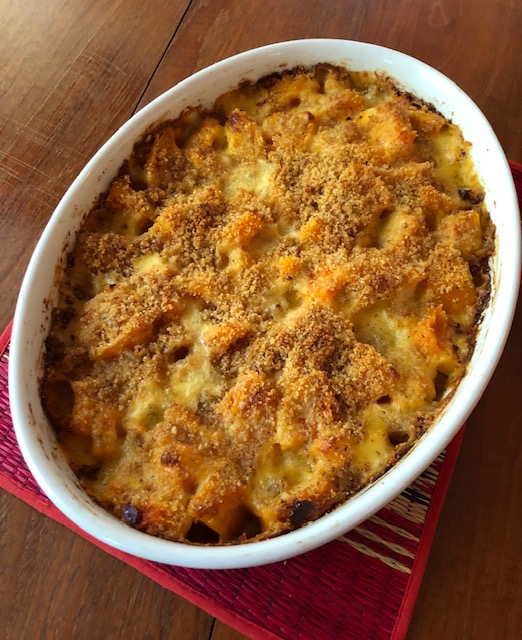Thai Soy Sauce Chicken – a Versatile Side Dish or Snack (with
Gluten-Free Option)
I was introduced to this
easily made chicken dish, Gai See Ew, by my sister-in-law, Nai, who is from
Chaing Mai in northern Thailand. She prepared it as an add-on, a substantial
condiment, for the savory garnished rice soup, “Khao Dom,” that she served for
a crowd. The luscious morsels of seasoned chicken were placed in a serving bowl
near many other small dishes – tiny pork meatballs, fried garlic, pickled
cabbage, green onion and cilantro – offered buffet-style for guests to spoon
onto their soup. Soy sauce chicken is home cooking rather than a restaurant
dish.
One batch of the recipe
below will make nibbles or add-ons for six people. Since the chicken pieces are
marinated then fried, if multiples of the recipe are used, the frying should be
done in batches so that the chicken actually fries fairly dry rather than
stews, which would happen if the chicken pieces were too crowded in the pan.
Typical soy sauce contains
gluten, since some wheat is fermented in with the soybeans in its production.
If gluten needs to be avoided, use a gluten-free Tamari-type of soy sauce. No
other ingredient in the dish contains gluten.
1 pound boneless, skinless
chicken breast
1 tablespoon soy sauce
(see above if gluten must be avoided)
1 small clove garlic put
through a garlic press or very finely minced
1/2 teaspoon cornstarch
1/2 teaspoon sugar
3/8 teaspoon salt
1/8 teaspoon ground black
pepper
1/8 teaspoon cayenne
2-3 tablespoons vegetable)
not olive) oil for frying
Several sprigs of cilantro
for garnish, if desired
Trim off any tough or
fatty parts of the chicken. Cut the chicken flesh into small pieces 1 1/2 inch
by 1/2 inch by 1/2 inch in size. Mix well with the soy sauce, garlic, and dry
ingredients. Allow to marinate, mixing occasionally, for at least an hour.
Refrigerate if longer than that.
If making more than a
single batch of chicken (1 pound), cook it in several lots of about one batch
each so that the chicken pieces fry rather than stews.
Heat a large wok or frying
pan to medium high. Add 2 tablespoons frying oil and when it’s hot add the
chicken. Immediately begin stirring and frying the chicken pieces and scraping
the bottom of the pan, using a metal
spatula or wok spatula. Cook this, stirring almost constantly, until no raw
color remains and the surfaces start to turn golden, 5-7 minutes. Cut a piece
of chicken in half to be sure the pink color is gone. Remove the chicken to a
platter.
Serve warm as part of a
meal, or at room temperature if using as an appetizer or part of a buffet.


























